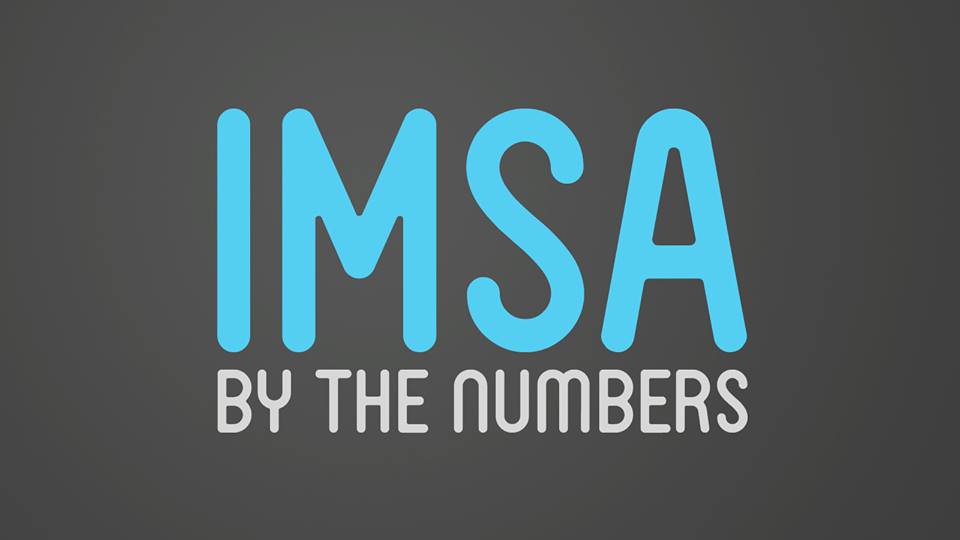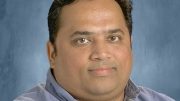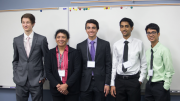
In 20 seconds, name all of your teachers consecutively.
By this point, everyone, you should be able to do this. Small case for you.
Now, if I asked our teachers to name all their students, do you think they can? At your regular, thousand-kids high school, probably not. But IMSA is one of the rare places where this can happen! Throughout our time here, students have bonded closely with faculty and staff – for me, through extracurricular activities, SIR, and daily light-hearted interactions. IMSA, more than any other school, has a closely-knit community.
Our teachers are as excited as you to start the new school year! Not as anxious as you, perhaps – they’re all qualified and experienced. Many have taught at IMSA for years, some longer than I’ve been alive. Still, they expressed that this year is special for them. COVID is in the rear-view mirror; academic support (S&E) periods are implemented; and the new 10-year IMSA plan, centered on residential life and Artificial Intelligence (AI), is released. Several of our beloved teachers were interviewed, and their responses provide a broader perspective on the culture around IMSA, the recent changes, and what you, students old and new, can expect this year! Ready for some spicy, Ad-Chem-fire-level takes?
Teachers When They Aren’t Teaching
When I’m not pooching around, I’m working like a dog trying to sniff out the latest story. I frolic and I dance, and I do this with my pants…
Peter Porker, from Into the Spider-Verse (2018)
Even superheroes have a personal life, when they are not called upon into action. For students, this might mean volleyball at the sand courts, sunset walks with your favorite people, or playing card games with your wing. Similarly, for teachers, there’s plenty of entertainment outside of class time.
Dr. Brian Trainor is a beloved math faculty here at IMSA. His smile and immaculate hair are a staple of his statistics class. But deep down inside, there’s a brewing love for…K-Pop! His favorite part of last year was attending numerous K-Pop concerts in Chicago, having seen bands like Seventeen and Twice. It’s not a surprise, then, that Dr. Trainor loved the ASIA NightMarket event last year, where student groups gathered by the volleyball sand and danced to a wide range of K-Pop or cultural, traditional songs. In this aspect, Dr. Trainor is like me – and many others at IMSA. We all love K-Pop, and he does something that I could only dream of: going to a live concert. Dr. Trainor’s passion for Taylor Swift is also unmatched, and so is his absolute affection for vegan tacos.
Speaking of tacos, one teacher wrote that the worst part of last year was missing out on Lexington’s Taco Tuesday. That’s our very own Dr. Joseph Golab, chemistry faculty at IMSA! I understand, Dr. Golab. Lexington’s Taco Tuesday is my favorite meal of the week too. I apologize for eating too many tacos the day they ran out for you. Dr. Golab teaches some of the hardest chemistry courses on campus, notably Advanced Chemistry (AdChem), and he (occasionally) starts some fires in the lab. Last year, he and Dr. Kopff, another amazing chemistry teacher, lit the colorful fires to celebrate CAB’s Clash event. Petition to always save some taco meat for Dr. Golab, or else he might burn the school down.
Culture Around IMSA
Dr. Peter Dong, a renowned physics faculty, is concerned about our endless desires for a top college. Having gone to the most selective universities in the world and worked at places like Fermilab, he understands the implications of going to a “good” college. And he can confidently tell you that his life was not a result of the “College Name” section on his diploma. “Students would be a lot happier and learn better if they didn’t believe (incorrectly) that their choice of college determines the rest of their lives,” he said. IMSA is stressful enough, as it offers some collegiate-level courses in their full rigor. Competing for colleges will not help your mental health.
Mental health is quite a topic of discussion at IMSA. The best of us need a break at times, yet the never-ending burdens of academics and extracurriculars force us to continue. IMSA does provide Mental Health days, but those are subject to contention. Teachers like Dr. Dong, Dr. Smith (history), and Dr. Eysturlid (history) all mentioned that students used MH days to skip tests, or to extend their weekends. For smaller, elective rosters, it becomes almost impossible to run the class that specific day if a quarter of the students are gone, especially for humanities courses that require discussion. On the other hand, Dr. Trainor and Ms. Perry (physics) argued that there’s no control over when students are stressed, and it’s our liberty to take MH days when we feel the need. The general consensus amongst faculty members is that mental health is incredibly important, especially at IMSA, but resources like MH days shouldn’t be abused.
Most teachers, when interviewed about culture around IMSA, brought up the community. We really are a big family, and a diverse, fun one at that. Clash is our annual competition of the halls, sort of like Hogwarts. Through events like Talent Show and Drill, we determine the most united, spirited hall after a full week of action. The Clash Talent Show is a favorite for Dr. Dong and Dr. Trainor. Moreover, other student-led events, like the Culture Shows, affect our teachers too – they get to join in on the food! The dozens of student organizations on campus contribute to a community like no other. Ms. Perry commented that she still remembers the overwhelming support she received from her students a few years ago when the Russia-Ukraine war began. As a Ukrainian native with connections in the midst of the battlegrounds, it meant the world to her that her students cared and stood firmly by her side throughout all of it. Dr. Smith suggested bringing back student-faculty dinners, and Dr. Golab even recommended a flag football game to incorporate students and faculty, similar to the basketball game we had last year.
Policies and Administration: Successes and Complaints
Vision and practicality are different, and at IMSA, these words become near antonyms. The gap between administrators and students, even faculty, remains wide. Starting with the new 10-year plans for residential life and AI. Dr. Eysturlid has questions about what an AI hub would look like. As IMSA plans to build AI hubs on-campus and different innovation hubs across Illinois, it becomes difficult to pinpoint the physical nature of these spaces, utilizing AI that’s accessible on portable laptops. On a bright note, many teachers are already using AI in their classes. Ms. Perry said that for her Modern Physics class, AI generates solid responses for her questions, although not always accurate. Dr. Eysturlid commented that AI-enhanced writing augments the abilities of his students without taking away from their learning. Our teachers view ChatGPT as a tool, not a threat.
Dr. Trainor’s biggest concern is that IMSA doesn’t prioritize students’ voices, and this sentiment is shared amongst many. Dr. Eysturlid worries that administrators are often untransparent with their communications and decision-making. Many student leaders can attest to this with regard to club activities. However, changes like fob access and intersession calendars are rarely discussed with student representatives before implementation. In the countless administrative meetings I’ve been involved with, we’ve almost always had to react to large decisions instead of working proactively and transparently to coordinate these decisions. The decisions aren’t always what we, the students, need. Ms. Perry is concerned that while IMSA is moving towards an AI future, it is losing track of its present; the Student Inquiry and Research (SIR) department is heavily understaffed, with only a part-time SIR director to maintain the most essential IMSA program. Many of our STEM faculty have left since last year, and it seemed impractical to focus on a 10-year dream instead of our current students. Striking these delicate balances is tough, and Dr. Eysturlid suggests better transparency, both from administrative and student perspectives.
However, one innovation that will likely stay is the S&E time. To the dismay of students, that could mean a brief lunch break every day. However, S&E has had a massive impact on the efficiency of learning and the effectiveness of teacher office hours. Dr. Smith said that concentrating student-teacher sessions into a specific time daily makes everything organized and scheduling much easier. For Dr. Golab, it meant that whichever students he couldn’t attend on this day, he would attend tomorrow. Before S&E, Ms. Perry had scattered office hours only during her break times; now, she has a consistent block of time for students, making the process extremely smooth. For Dr. Trainor, not only is the Math Center vibrant during S&E, but he and his team could also eat lunch together during midday, as the convenience of S&E allowed for better scheduling and, as a result, more bonding. If anything, teachers complained that S&E periods are too short, and they’d like to see a longer break between classes to help more people. “As innovations go, [S&E] is one that I expect to stick around,” Dr. Smith said. Expect no different, and groups like StudCo and CCE will work closely with administrators to improve the lunch situation.
Final Remarks
Some teachers think IMSA won’t exist in 10 years, others credit their colleagues for amazing bakeries, and others complain that IMSA doesn’t have the perfect lab set-ups. Our teachers are a group of diverse, accomplished individuals. Behind their publications and academic honors are easy-going, passionate personalities that our students resonate with. Don’t be afraid to talk to them. In fact don’t be afraid to joke with them. I know Dr. Golab loves puns. I would find a nice chemistry pun, but I think all the good ones Argon!
If you ever want a nice conversation with a teacher, ask them how their Titan Crew was! It was the universally most hated program. Or ask them about the windows at IMSA. Dr. Smith wants IMSA to resemble Museo de Antropología de Xalapa in Mexico, and Dr. Golab wants IMSA to move to San Diego. As our StudCo President, Maggie DiMarco, once said, this school looks like a bunker for a zombie apocalypse refuge.




Be the first to comment on "Teachers’ Hot Takes Around Campus"